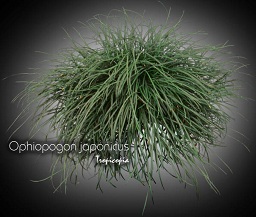Table of contents
Snake’s beard

Latin Name: Ophiopogon japonicus
Category: Grass
Family: Liliaceae
Origin: Japan
Climate: Subtropical
Growing Zones: 10, 7
Care Instructions
The Snake’s beard (Ophiopogon japonicus) is a subtropical plant that originates from Japan. This grass plant belongs to the Liliaceae family and is well-suited for growing in USDA zones 10, 7.
Complete Care Guide for Snake’s Beard (Ophiopogon japonicus)
Watering Requirements
Snake’s beard, or Ophiopogon japonicus, thrives in consistently moist soil but is also tolerant of short dry spells. It is essential to water the plant regularly, especially during the growing season in spring and summer. The soil should be kept evenly moist but not soggy; overwatering can lead to root rot. A good rule of thumb is to check the top inch of soil—if it feels dry, it’s time to water. During the winter months, reduce watering frequency as the plant enters a dormant phase. Always ensure that the pot or garden bed has good drainage to prevent water accumulation.
Light Conditions
Snake’s beard prefers partial to full shade, making it an excellent choice for shaded garden areas or under trees. While it can tolerate some direct sunlight, especially in the morning, too much harsh afternoon sun can scorch the leaves. Ideally, aim for dappled sunlight or filtered light conditions to promote healthy growth. If grown indoors, place it near a window that receives indirect light. This plant is quite adaptable, but providing the right light conditions will enhance its lush foliage and overall vigor.
Soil Preferences
Ophiopogon japonicus thrives in well-draining, rich, organic soil. A mixture of potting soil with added peat moss or compost works well to provide the necessary nutrients and moisture retention. The ideal pH level for Snake’s beard is slightly acidic to neutral, around 6.0 to 7.0. Regular fertilization is not necessary, but applying a balanced, slow-release fertilizer in early spring can promote vigorous growth. If you notice the leaves turning yellow, it may indicate a nutrient deficiency, and a light application of fertilizer can help restore health.
Pests and Diseases
While Snake’s beard is generally resistant to pests and diseases, it can occasionally be affected by aphids, spider mites, and mealybugs. Regularly inspect the leaves for any signs of infestation, such as webbing or sticky residue. If pests are detected, treat them promptly with insecticidal soap or neem oil. Additionally, watch for fungal diseases like root rot, which can occur if the plant is overwatered or if the soil does not drain well. Ensuring proper watering practices and good air circulation around the plant can help prevent these issues.
Special Care Tips
To maintain the health and beauty of your Snake’s beard, consider the following special care tips: First, mulching around the base of the plant can help retain soil moisture and suppress weeds. Second, during the growing season, remove any dead or yellowing leaves to encourage new growth and improve air circulation. If you live in a region with cold winters, consider providing some winter protection, such as a layer of mulch or moving potted plants indoors. Lastly, Snake’s beard can be propagated easily through division; every few years, divide the clumps in early spring to rejuvenate the plant and create new specimens for your garden.








